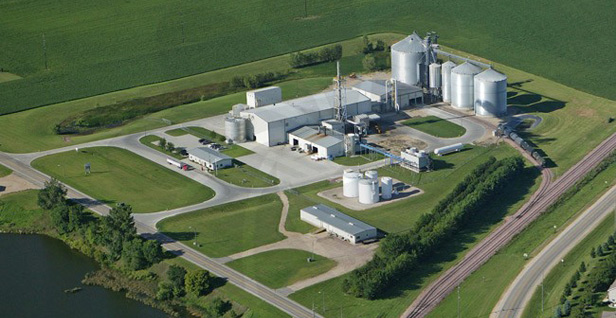To Survive, Some Biofuels Companies Give Up on Biofuels

Gevo, a prominent advanced-biofuels company that has received millions in U.S. government funding to develop fuels made from cellulosic sources such as grass and wood chips, is finding that it can’t use these materials if it hopes to survive. Instead, it’s going to use corn, a common source for conventional biofuels. What’s more, most of the product from its first facility will be used for chemicals rather than fuel.
As the difficulty of producing cellulosic biofuels cheaply becomes apparent, a growing number of advanced-biofuels companies are finding it necessary to take creative approaches to their business, even though that means abandoning some of their green credentials, at least temporarily, and focusing on markets that won’t have a major impact on oil imports. This is hardly the outcome the government hoped for when it announced cellulosic-biofuels mandates, R&D funding, and other incentives in recent years.
Cellulosic biofuels still cost much more to produce than either corn ethanol or gasoline. One reason is that startups have had trouble raising enough money to build the large-scale commercial plants needed to lower costs. That’s in part because their technology is unproven, and in part because there’s no guaranteed market for cellulosic biofuels yet.
Additionally, government mandates that were meant to help create a market for cellulosic biofuels have so far been ineffective; it’s typically cheaper for the fuel providers affected by the mandate to purchase credits rather than biofuels. And finally, supply chains for cellulosic materials aren’t yet well developed, so companies face a challenge when they try to lock in reliable access to them.
Gevo’s strategy addresses all these problems. Besides relying on corn in order to overcome supply challenges, the company is reducing capital costs by retrofitting existing corn ethanol plants rather than building new ones; the retrofit of the first plant, in Luverne, Minnesota, will cost about $40 million, a fraction of the hundreds of millions it costs to build a new plant. And rather than making ethanol, Gevo is making butanol, which can command a higher price—especially for use as a feedstock for the chemical industry. Gevo expects that it can make butanol from corn—a readily available feedstock—for significantly less than it costs to make it from petroleum.
Gevo plans to start operations at Luverne within the next six months or so and hopes to produce 17 million gallons of butanol per year there. Most of it is destined for Sasol Chemical Industries, which will sell the butanol to make chemicals.
Butanol can be converted into a wide range of chemicals for making plastics and other products that are now made with oil. Gevo already has an agreement with a major maker of synthetic rubber, and last week it announced a partnership with Coca-Cola to develop plastic bottles made entirely from plants.
Gevo is not entirely abandoning the fuels market, however. It has an agreement with a distributor that can sell the butanol for use in small engines and marine engines, two applications where ethanol doesn’t work well. It’s also making 11,000 gallons of jet fuel from its butanol for the U.S. Air Force, which wants to test it for use in planes. That contract will cover the cost of a 10,000-gallon-per-month jet fuel demonstration plant, says Pat Gruber, Gevo’s CEO.
The use of corn for fuels and chemicals is controversial, in part because growing and processing corn releases significant amounts of greenhouse gas, and in part because using corn for fuel may affect food markets.
Gruber says the impact on food supplies and prices is mitigated by the fact that the protein in corn is still available for use in animal feed. He even makes the case that using the sugar from corn to make fuel rather than soft drinks could help the obesity problem in the United States.
“Suppose we’re in a world where we’re making huge quantities of fuels and displacing petroleum. We could come to the point where we’re running in a conflict of food versus fuel,” he says. “We should use only excess carbohydrates to make fuels.” Even so, eventually the company plans to use nonfood sources. “The feedstock in the U.S. right now is corn starch,” he says. “That’s the right feedstock for us. In the future it will be cellulosics.”
Keep Reading
Most Popular
Large language models can do jaw-dropping things. But nobody knows exactly why.
And that's a problem. Figuring it out is one of the biggest scientific puzzles of our time and a crucial step towards controlling more powerful future models.
How scientists traced a mysterious covid case back to six toilets
When wastewater surveillance turns into a hunt for a single infected individual, the ethics get tricky.
The problem with plug-in hybrids? Their drivers.
Plug-in hybrids are often sold as a transition to EVs, but new data from Europe shows we’re still underestimating the emissions they produce.
Google DeepMind’s new generative model makes Super Mario–like games from scratch
Genie learns how to control games by watching hours and hours of video. It could help train next-gen robots too.
Stay connected
Get the latest updates from
MIT Technology Review
Discover special offers, top stories, upcoming events, and more.